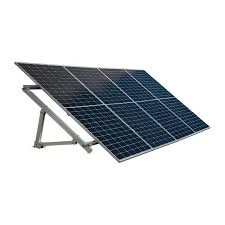Sizing a 1kVA Solar Panel System for Optimal Energy Generation
Understanding the Size of a 1 kVA Solar Panel System
As the world moves towards sustainable energy solutions, solar power has emerged as a popular choice for both residential and commercial installations. Among the various configurations available, a 1 kilovolt-ampere (kVA) solar panel system is particularly appealing for small-scale energy needs. However, one question often arises how large is a 1 kVA solar panel system?
What is a 1 kVA Solar Panel System?
First, it's essential to understand what kVA means. A kVA is a unit of apparent power, representing the total amount of power in an electrical circuit, both used and unused. In the context of solar power, a 1 kVA system can generate roughly around 800 to 900 watts of usable electrical power, depending on factors like inverter efficiency and system losses. This capacity is ideal for powering small appliances and lighting, making it suitable for homes or small businesses.
Determining the Size of the Solar Panels
The size of a solar panel system is primarily dictated by the solar panels themselves. Standard solar panels typically produce between 250 watts to 400 watts per panel. Therefore, to achieve a 1 kVA system, one would need to calculate the number of panels required based on their wattage.
For instance, if you are using 300-watt solar panels, you would need approximately 3 to 4 panels to meet the 1 kVA requirement. Here’s the math - 3 panels at 300 watts each = 900 watts (0.9 kVA) - 4 panels at 300 watts each = 1200 watts (1.2 kVA)
1kva solar panel size

Therefore, selecting three to four panels allows for a buffer against inefficiencies that might arise due to shading or other environmental factors
.Physical Space Requirements
The physical size of solar panels varies by manufacturer but typically exists within a standard range. On average, a 300-watt solar panel measures about 65 inches by 39 inches (approximately 5.4 feet by 3.3 feet). Thus, if you opt for three panels, the total area required would be about 44 square feet. If you choose four, the area would increase slightly but still remain manageable for most residential rooftops or small properties. Considering this, adequate roof space becomes a significant factor in determining system feasibility.
Additional Components
Beyond the solar panels, a complete solar installation also includes various additional components an inverter to convert the generated DC power to usable AC power, mounting hardware, and in some cases, battery storage solutions for off-peak usage. While these components do not take up as much physical space as the panels, they are critical for the overall functionality of the solar system.
Conclusion
In conclusion, the size of a 1 kVA solar panel installation is not solely about the solar panels themselves; it also includes consideration of space for the inverter and other necessary elements. Aiming for efficiency and ensuring environmental conditions are optimal can enhance output, potentially allowing for smaller systems to meet energy needs effectively. As the push for renewable energy continues to grow, understanding these dimensions will empower homeowners to make informed decisions regarding their solar investments. With the right setup, a 1 kVA solar panel system can provide a significant boost toward a sustainable energy future.
-
Unlocking Energy Freedom with the Off Grid Solar InverterNewsJun.06,2025
-
Unlock More Solar Power with a High-Efficiency Bifacial Solar PanelNewsJun.06,2025
-
Power Your Future with High-Efficiency Monocrystalline Solar PanelsNewsJun.06,2025
-
Next-Gen Solar Power Starts with Micro Solar InvertersNewsJun.06,2025
-
Harnessing Peak Efficiency with the On Grid Solar InverterNewsJun.06,2025
-
Discover Unmatched Efficiency with the Latest String Solar InverterNewsJun.06,2025







